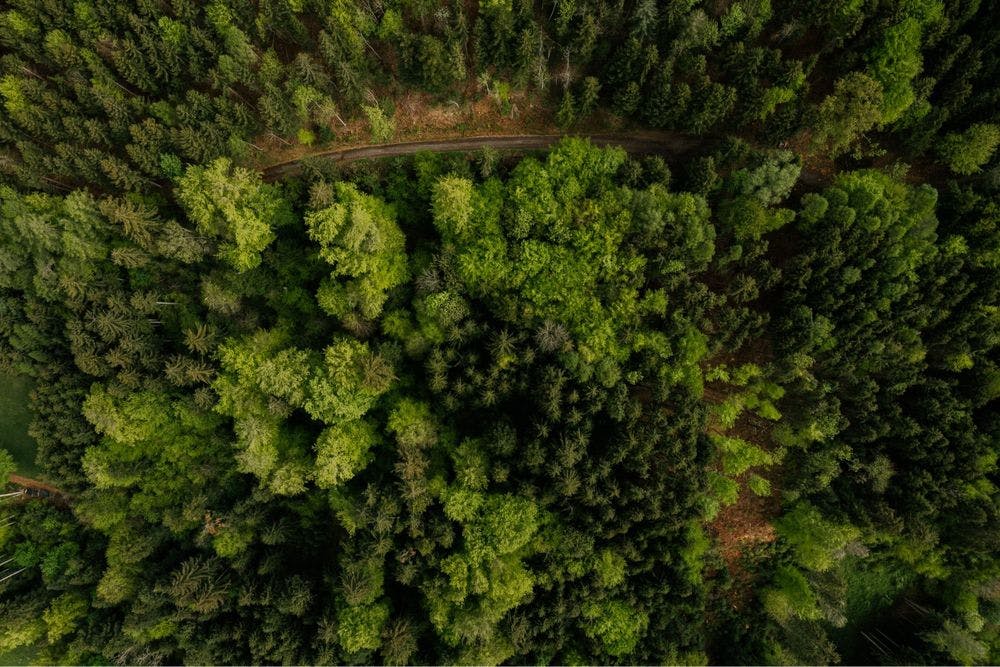
Forest carbon management: principles for selling carbon credits
21. 9. 2022
|

Marie Woida

The Austrian Chamber of Agriculture has finalized the position paper on carbon management in forests with the principles for the sale of CO₂ credits. In addition to some wording changes, the earmarking of the proceeds was neglected in this final version. Thus, reinvesting the profits generated from the sale of CO₂ credits in silvicultural measures is no longer a principle. The final document can be found here:
Download: Position paper of the Austrian Chamber of Agriculture
Carbon management in forests
As one of the greatest challenges of the next decades, the climate crisis defines our time. The European Union's goal is to stop releasing net greenhouse gas emissions by 2050. To achieve this goal, the use of fossil raw materials must be reduced immediately and unavoidable CO₂ emissions must be compensated for in sinks. In this development, biogenic climate protection projects are becoming increasingly important.
In the wake of the Land Use, Land Use Change and Forestry (LULUCF) Regulation or the Taxonomy Regulation, agriculture and forestry are increasingly becoming the focus of carbon sequestration. As a result, the Austrian Chamber of Agriculture has formulated a set of principles for the sale of carbon credits.
General principles
The priority is to phase out fossil fuels and increase raw material and energy efficiency. It is significant that CO₂ compensation is accompanied by CO₂ reduction. Avoiding emissions comes before reducing and offsetting. Offsetting companies should therefore demonstrate a fossil CO₂ emissions reduction plan. In addition, sound business practices, through, for example, measurability, no double-billing, as well as transparency, should be followed. The latter can be ensured by documentation in a publicly accessible register.
In principle, carbon storage in biomass is a climate protection service. According to the European Union, land managers should sell carbon credits in the same way as their traditional products. This trade takes place voluntarily between two contracting parties, and the state can also act as such. Credits are traded specifically, this trade is different from the emission certificate sector.
The contract period between the two partners should be between 20 and 30 years, thus guaranteeing independence for the future generation. With regard to the remuneration of the climate protection services, market-based mechanisms are used. It is particularly important that no double counting takes place, therefore the trade is limited so far to the national borders.
Accredited certification is an important prerequisite here. This should, for example, also enable small structures to participate. In Europe, the ISO 14064-1 to 3 series of standards are suitable for this purpose. Outside Europe, the GOLD standard and VERRA in particular have become established.
Special aspects of forest management
The current marketing of carbon sequestered in wood is limited to sawmill, industrial or energy wood products. As an additional product, CO₂ credits open up new opportunities for forestry.
In the carbon management of forestry, only the wood stock has been considered so far. Compared to carbon in the forest soil, this is easy to measure and can be developed more quickly. The wood stock is regulated by law, thus preventing drastic deforestation and safeguarding the functions of the forest. A baseline can be set above which deliberate non-use constitutes a climate protection service.
The long-term storage effect of the forest should also be secured. In the wake of the climate crisis, the calamity risk for forest stands increases significantly. Increasing the number of participants and thus the size of the area reduces the risk. Annual payments can be stopped immediately in case of calamity and it is possible to create reserves for such a case.
The CO₂ products of forestry are stock building and stock preservation, rewetting of peatlands, and building with wood. Regarding timber stock, it should also be possible for operations that have built up a high stock in recent years and are now facing the regeneration phase to participate in the trade. In addition, participation in timber certification schemes should be considered and can increase the value of credits.
Basic differences from agriculture
Unlike forestry, where the focus is on above-ground biomass, agriculture looks at humus buildup in the soil. Likewise, there are hardly any approaches to stronger carbon sequestration in forestry. Whereas in agriculture, targeted measures already exist within the framework of ÖPUL.
Read here the entire document of the working group "Carbon Management in Forests" of the Austrian Chamber of Agriculture, of which Tree.ly CEO Jodok Batlogg is a member.
Learn more about buying carbon credits from verified forestry projects right here in Europe, enabling sustainable action in your own backyard: Tree.ly for Business












